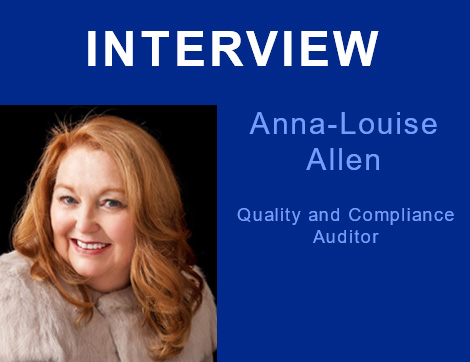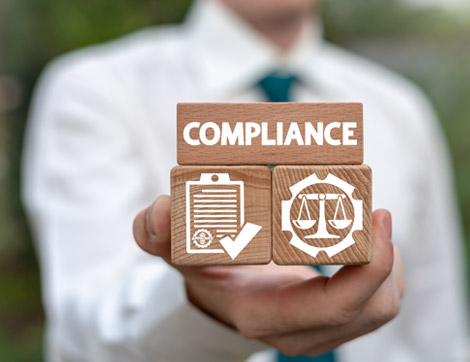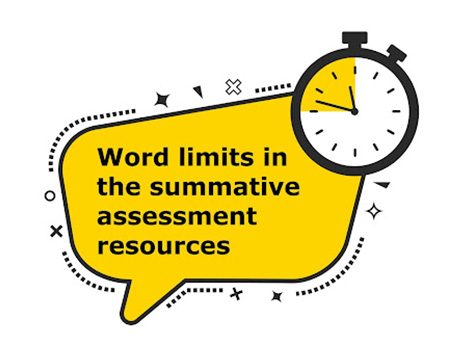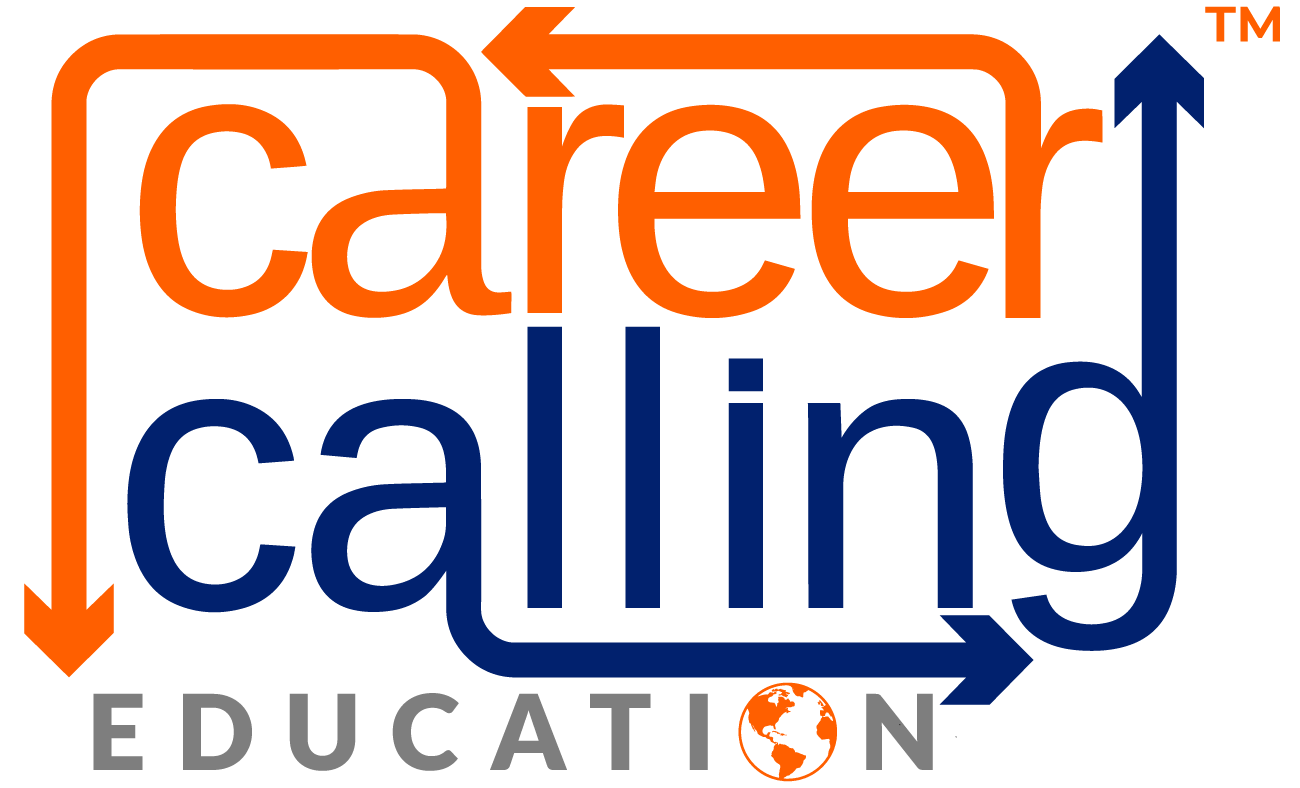-
Home
- |
- Blogs
- |
- Training and Assessment
- |
- CAQA FAQ Series – Industry consultation
- Home
- |
- Blogs
- |
- Training and Assessment
- |
- CAQA FAQ Series – Industry consultation

CAQA FAQ Series – Industry consultation
What is industry consultation in the RTO context?
It is a process in which the training representatives of a training organisation consult with representatives from the industry to determine whether they are using the most appropriate facilities, equipment, and resources for delivering the training, whether their trainers and assessors have the most up to date qualifications and skills, whether their training and assessment strategies, methods, technology, and training and assessment resources meet the needs of industry. The goal is to get an understanding of the best practices and resources available in the sector, as well as to modify those resources to better match the needs of that industry.
What do Clause 1.5 and Clause 1.6 say? Why does it state that the RTO’s training and assessment practices should be relevant to the needs of the industry and informed by industry engagement/ participation?
The training organisation in the vocational education and training sector delivers and assesses any training product to ensure that the learners are prepared to work in the industry or are better able to operate effectively in the industry after completing the training course. The training organisation must ensure all of their training and assessment practises, including identifying compliant RTO learner and assessment resources, all assessments meeting the principles of assessments and rules of evidence, and other applicable requirements; delivering training and assessments in a compliant manner to learners, including the skills and competencies of the trainers and assessors delivering and assessing the training; and participating in validation, contextualisation, customisation and all other activities related to the training and assessment, are in line with current methods, technology, products and performance expectations for the workplace tasks specified in the training package or VET accredited course and standards of registered training organisations.
Clause 1.6 states ‘a range of strategies’, what are those?
A range of strategies refers to various approaches and methods that a training organisation must employ in order to conduct industry consultations. The RTO must collaborate with industry stakeholders to develop appropriate contexts, methods, resources, and engage trainers and assessors in the delivery and administration of training and assessment practises. Consultation strategies can include a variety of methods such as face-to-face meetings, surveys, interviews, advisory committees, workplace visits, email exchanges, workshops, and other forms of engagement.
What you should discuss when you engage with the industry.
The requirements of Clause 1.6 clearly states what you must discuss. We have added a few examples of what the content of these discussions may include based on our audit experiences and industry best practice.
Training and Assessment Strategy:
i. Training and assessment strategy (TAS) for each training product for each learner cohort
ii. Choice of electives
iii. Pre-requisites
iv. Corequisites
v. Appropriate contexts and methods
vi. Delivery modes such as face to face, online, on the job, distance learning, blended mode of delivery
vii. Delivery schedule/order in which units should be delivered and assessed
viii. The needs of groups or individual learners such as reasonable adjustment in training delivery or assessment
ix. Meeting the needs of the training package or accredited training product
x. Specific admission requirements especially where the entry requirements are not included within the training package or accredited training product
xi. Required trainer and assessor competencies
xii. Assessment guidelines and qualification packaging rules
xiii. Assessment evidence requirements specified in the training products such as units of competency
Training and Assessment Practices
xiv. Regulations or laws governing the industry and/or standard operating procedures, equipment and machinery used at the enterprise level
xv. Aspects of the work environment (for example, shifts or seasonal changes to schedules) that will affect delivery and assessment
xvi. Employer preferences about the way in which a program is delivered
xvii. Facilities, equipment and supervision that will be available for work placements
xviii. How simulated work environments should be set up to reflect workplaces
xix. Advice on contextualising or adapting purchased assessment materials to suit workplace contexts.
xx. Validation practices
xxi. The length of a unit of competency
Training and Assessment Resources
xxii. Assessment resources
xiii. Learner resources
xxiv. Support staff or resources
xxv. Facilities
xxvi. Equipment
xxvii. Technology
xxviii. Simulated work environments
xxix. Agreements for the use of resources and facilities
Currency of industry skills of trainers and assessors
What changes should be implemented as a result of engagement with industry and employers?
A number of changes can be implemented as a result of engagement with industry and employers, such as:
- changes to training and assessment practices and resources based on advice from industry regulators about new regulatory requirements
- implementation of workplace visits for trainers and assessors to ensure currency of understanding about workplace practices, based on advice from employers.
Who are suitable industry representatives for industry engagement and consultation purposes?
People who work in team leadership, supervisory, or management positions and who have the ability to recruit others are the most appropriate industry representatives for industry engagement and consultation because they can provide the best advice in terms of:
a. the skills and competencies they seek in the learners
b. the quality of resources they are considering for
c. the quality of training and assessments they would use at their workplace.
Can you give some specific examples of suitable industry representatives for industry engagement and consultation purposes?
Suitable industry representatives can include:
- Team leaders
- Managers
- Directors
- Members of industry advisory committees
- Work-based training providers
- Training advisory bodies
- Other relevant industry bodies
- Ongoing networking with industry organisations, peak bodies, or employers
- Enterprise RTOs
- Unions
- Licensing and regulatory bodies
- Networks of relevant employers and industry representatives to participate in assessment validation
- Exchange of knowledge, staff and resources with employers, networks and industry bodies.
How often do I need to do industry consultations and industry engagements?
Although there are no set timeframes or frequency requirements specified in the regulatory standards and guidelines, we recommend that you perform this process at least once or twice a year.
Industry consultation and engagement should be planned, scheduled, and conducted on a regular basis. Industry participation should be a regular part of the validation process and should be scheduled as part of the validation schedule. Evidence of current industry engagement, on the other hand, is necessary for the purpose of renewing a registration. Ideally, “currency” should be available within 12 months of the registration period.
When is industry consultation compulsory?
Industry consultation and engagement is compulsory if:
- Your training organisation is adding a new training product to its scope of registration
- The legislative or regulatory standards, guidelines or requirements change
- The training product is superseded
- A new training and assessment strategy is developed for a new learner cohort
- On a regular basis using a range of strategies to meet the requirements of standards for registered training organisations
Can I do my industry consultation and engagement with another RTO? For example, I do their consultation, and they do mine.
The short answer according to our experience is “no”. The regulatory body expects training organisations to genuinely involve industry representatives (outside the training organisations, wherever possible) to participate in the industry engagement and consultation processes.
What is the rationale behind conducting industry engagement and consultation?
In order to benefit from industry engagement, it is necessary to understand what the information collected from this engagement will be used for and how it can assist the RTO. It will;
- Assist in the development of training and assessment strategies
- Help choose the most appropriate training and assessment materials, equipment, facilities and resources
- Provide feedback on the RTO’s delivery of training and assessment,
- Ensure that the RTO’s trainers and assessors have current industry knowledge and expertise.
Industry engagement helps to ensure that graduates have industry-relevant skills and knowledge and are able to apply them in the workplace which means that the training and assessment programs are industry-relevant.
Is there any template prepared and published by the regulatory bodies for industry engagement and consultation?
A template has been prepared and published by the regulatory body for accredited course application https://www.asqa.gov.au/course-accreditation/renew-course/stage-2-course-review-and-redevelopment you may find it useful to include some of the particulars in this template.
What are the documents that I need to demonstrate compliance to Clause 1.5 and Clause 1.6?
There is no prescribed forms or evidence mentioned in the standards. We recommend that you have regular ongoing communication with the industry and implement a system that can demonstrate how you engage (using a variety of methods) in order to systematically monitor your training and assessment strategies, resources, facilities, equipment, and practises to ensure ongoing compliance, as well as how you systematically evaluate and use the feedback received from the industry.
For more information, please call CAQA or email us at info@caqa.com.au.
3 years ago
Related News

29 April, 2021
Writing your Training and Assessment Strategy – Part 2 of Part 5
To refresh yourself, please find Part 1 here In our part 1, we had the opportunity to cover a number of topics relevant to writing a compliant and useful training and assessment strategy. Topics covered included: What is the definition of training and assessment strategy? Why is it known as a high-level view of a […]
4 years ago

22 August, 2021
According to a new report, businesses are increasing their investments in cybersecurity skills
According to new research from cybersecurity firm Sophos, internal IT departments and businesses are making investments in their staff’ cybersecurity skills and knowledge. According to a new analysis from Sophos, IT teams around the world faced unprecedented challenges in 2020 and 2021, with cybersecurity issues ranking at the top of the list – if not […]
3 years ago

3 September, 2021
How to transition from classroom to online or distance training and assessment
Moving from face-to-face training and assessment to online or distance learning and assessment can be difficult, especially when you have already invested in facilities, equipment, and resources for face-to-face training and assessment. However, in order to survive and also to embrace new technologies, many training organisations have decided to move to an online or distance […]
3 years ago

19 September, 2021
Quality training and assessment resources from CAQA Resources
While operating as a registered training organisation, you will be required to make a range of decisions, with obtaining high-quality training and assessment resources being among the most significant. To ensure that your students receive the learning experience necessary to function competently in their chosen vocation, you need to invest in quality assessment and learner […]
3 years ago

4 October, 2021
The strategies for achieving personal and professional success.
There are many strategies to success you can use in your life. Some people are successful because they work hard. Other people are successful because they have a great opportunity that came their way. Some people are successful because they have the right connections, but most people are successful because they have good timing. These […]
3 years ago

4 October, 2021
Contextualisation – Why you must contextualise the training and assessment resources.
Understanding contextualisation Contextualising assessments and learner materials is one of the most thought-provoking tasks that RTOs face. Many RTOs are deemed non-compliant due to their contextualisation ‘methods’. What is contextualisation, what is the right way to do it, how is it done, why do RTOs conduct it incorrectly? Before explaining what is contextualisation, let’s first […]
3 years ago

14 October, 2021
Risk assessment and risk management at your organisation
Risk assessment and risk management at your organisation should be a continuous process. It involves best practices like identifying, assessing and mitigating risks. Risk assessment is the process of identifying and analysing the hazards, risks, and threats to an organisation. A risk assessment is a process to identify and evaluate the potential risks and threats […]
3 years ago

14 October, 2021
Training and assessment strategies – why you should have a clear roadmap!
When it comes to training, there are many factors that contribute to the effectiveness of the training. However, one of the most important factors is how effective and efficient your training and assessment strategy is. There are a number of key considerations in training and assessment strategies including but not limited to: – Learner experience […]
3 years ago

17 October, 2021
How to protect the copyright of your training and assessment materials Margaret Ryan (lawyer and trade marks attorney)
Training and assessment materials are normally protected by copyright in Australia. They are a valuable resource and should be protected from unauthorised copying, which may reduce their value and the value of the business which supplies these resources. Copyright is automatic In Australia copyright protection is automatic. As soon is an author records their thoughts […]
3 years ago

1 November, 2021
How to check the quality of assessment resources
Critical skills for checking the quality of your assessment resources. The purpose of the assessment tool The main purpose of an assessment tool, student assessment, or assessment pack is to ensure that trainers and assessors can effectively establish whether a learner is competent or not yet competent in a training product. There are three ways […]
3 years ago

1 November, 2021
CAQA FAQ Series – Industry consultation
What is industry consultation in the RTO context? It is a process in which the training representatives of a training organisation consult with representatives from the industry to determine whether they are using the most appropriate facilities, equipment, and resources for delivering the training, whether their trainers and assessors have the most up to date […]
3 years ago

14 December, 2021
Interview with Anna-Louise Allen, Quality and Compliance Auditor
Anna-Louise Allen has been a leader in education and a catalyst for change and innovation in teaching and learning throughout her career. Anna-Louise commenced as a technical school teacher in the western suburbs teaching Geography. She had held leadership positions in schools, run the Geography Teachers Association of Victoria and worked in a variety of […]
3 years ago

31 January, 2022
Formative vs Summative Assessment: A Comparison
Formative and summative assessment, the two main types of assessing knowledge and skills, are often confused with one another. Both types of assessment have a place in the teaching and learning process, but it can be difficult to distinguish between formative and summative assessment. Both formative and summative assessments are used to assess learning, provide […]
3 years ago

20 February, 2022
NCVER Report – Upskilling and reskilling: the impact of the COVID-19 pandemic on employers and their training choices
Photo source: NCVER NCVER’s latest research examines how Australian employers have been affected by the COVID-19 pandemic and their future workforce training plans. To survive financially during the pandemic, many businesses had to adjust and digitise their operations, as well as shift quickly to remote working arrangements. As restrictions started easing in 2020, businesses were […]
3 years ago

20 February, 2022
RTO compliance guide to buy compliant assessment resources
According to almost all ASQA reports, getting an assessment right is one of an RTO’s most difficult compliance issues, with a substantial number of RTOs, audited being found to be non-compliant with clause 1.8 (ASQA’s 2017 report showed around 72{811251a11785699196b1edfb998e8df43131d83f2e2fc9971f96b5821112af2c} RTOs failed audit on assessment resources). This is what we notice as well whenever we […]
3 years ago

25 April, 2022
Issuing qualifications to your own trainers, assessors and staff members
Qualifications are important. They ensure that trainers and assessors are current and competent in their fields. They also help to put a check on the quality of training provided by trainers and assessors. You may be tempted to issue qualifications to your own trainers, assessors and staff members for a number of reasons such as […]
3 years ago

22 May, 2022
The importance of having word limits in the summative assessment resources
One of the most important aspects of VET is summative assessment. Summative assessment resources play a vital role in ensuring that students are able to demonstrate their learning and progress. However, summative assessment resources can also be a source of frustration for both students and educators if they are not well managed and written. It […]
3 years ago
Archives
- July 2022
- June 2022
- May 2022
- April 2022
- March 2022
- February 2022
- January 2022
- December 2021
- November 2021
- October 2021
- September 2021
- August 2021
- July 2021
- June 2021
- May 2021
- April 2021
- March 2021
- December 2020
- November 2020
- May 2020
- February 2020
- December 2019
- November 2019
- October 2019
- September 2019
- August 2019
- July 2019
- May 2019
- April 2019
- March 2019
- December 2018
- November 2018
- October 2018
- September 2018
- August 2018
- July 2018
- June 2018
- May 2018
- November 2016
- October 2016

Sukh Sandhu
Chief Executive Officer
Sukh has been working in the VET and Higher Education Industry for over 20 years. In this time, he has held several roles with RTO’s including CEO roles for International Colleges and National Compliance and Quality Assurance Manager roles for several RTO’s, TAFE’s and Universities. Sukh has also worked for ASQA as a Business Systems Project Official.
Sukh has had extensive project management experience in risk management, compliance, administration and as a training consultant. He has extensive knowledge in government compliance standards and has participated in nearly one hundred audits across Australia and provided consultancy advice regarding ASQA/VRQA, TEQSA, ACPET, DET-HESG, VQF/Higher Education, ELICOS, NEAS, ANMAC, AHPRA, CRICOS, ESOS and ISO.
Sukh is a member of several independent professional organisations and government bodies including, ACPET, VELG, ACS, AITD, MARA, MIA, ISANA, APEX, IEEE, The Internet Society (Global Member), AISIP, IAMOT, ACM, OISV, APACALL, IWA, Eta Kappa Nu, EDSIG and several others.

 Enrol Now
Enrol Now Info Pack
Info Pack










